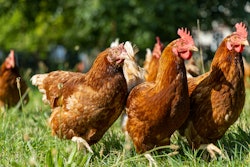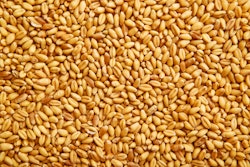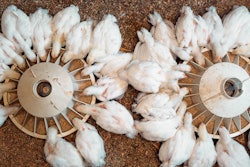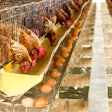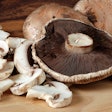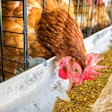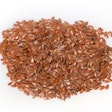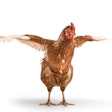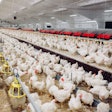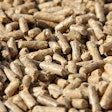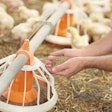
Grape skins, seeds and stalks left over from the wine and grape juice industries may provide new opportunities to improve the health of chickens and other animals, according to researchers.
In a new paper, “Concord Grape Pomace Extract Impacts Dextran Sulfate Sodium-induced Inflammation In Ovo,” published April 28 in the Journal of Functional Foods, three Cornell University researchers explored how to optimize spent grape pomace as a sustainable dietary ingredient with health and nutritional benefits for broiler chickens.
The corresponding author is Elad Tako, associate professor in the Department of Food Science in the College of Agriculture and Life Sciences. Co-authors are Melissa Huang, doctoral student in the field of food science, and Eliot Dugan, who did an honors thesis in Tako’s lab.
The objective of this study was to evaluate the potential anti-inflammatory effects of grape pomace in the intestines of fetal chicks.
While the research is relevant to humans and other species, in the broiler chicken industry, where an animal goes from birth to harvest in just 42 days, an extract made of grape pomace was shown to reduce inflammation and thus decrease risk of other diseases.
With rapid growth a crucial goal, “low-grade inflammation is the baseline in the broiler industry,” Tako said. “What we propose here, for the first time, is to show that grape pomace extract could potentially decrease the susceptibility to these other diseases and negative aspects that inflammation would lead to. Inflammation weakens the immune system and opens the birds to other pathogens such as avian flu.”
Some grape pomace is reincorporated into animal feed or repurposed as fertilizer, but a majority ends up in landfills, making it a significant environmental and economic burden. Huang, who led the study, aimed to determine whether grape pomace, which has varied phenolic compounds strongly associated with anti-inflammatory effects, is indeed anti-inflammatory.
To find out, they administered one injection in the amniotic fluid in chicken eggs to induce inflammation, and then a second one of a grape pomace extract to intervene.
It was shown to improve symptoms of gut inflammation and improve intestinal health, Huang said, which suggests a need for further investigation to optimize grape pomace’s anti-inflammatory effects.
“Studies show that fiber and polyphenols, on their own, can affect inflammation,” Huang said. “We need to differentiate which specific compounds in grape pomace are making this difference.”
Dugan, who will return to Cornell in the fall as a doctoral student and who recently was the recipient of the 2025 SUNY Chancellor’s Award for Student Excellence, is also exploring the effects of grape pomace extract on skeletal muscle in poultry.
“We’re looking to see if the polyphenols in grape pomace indirectly benefit muscle, research that could have implications for humans and other animals,” Dugan said.


